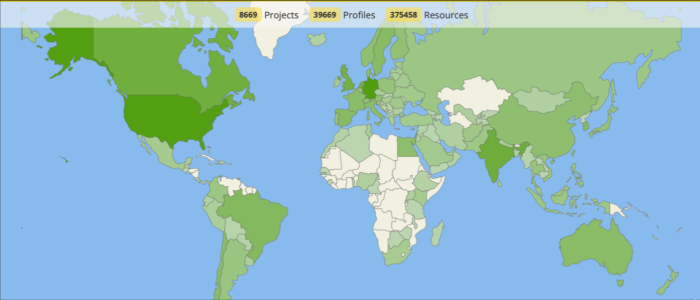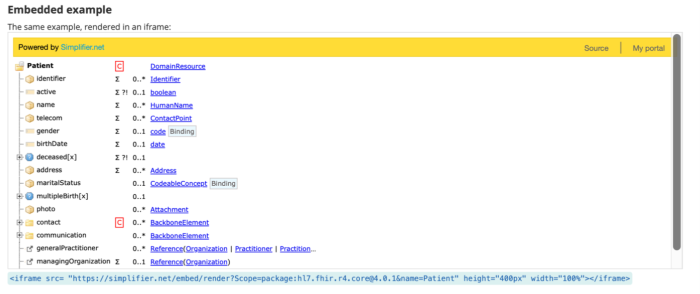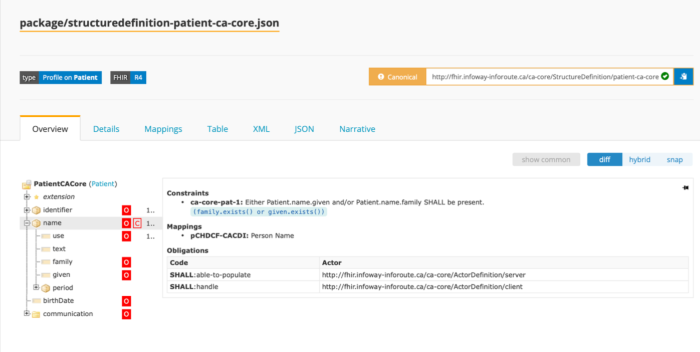Simplifier.net Release 2025.4 – Futureproof your FHIR projects
As a digital health platform, Simplifier.net constantly evolves alongside the FHIR standard. Release 2025.4 introduces enhancements that boost both the user experience and the quality of your FHIR content. This note walks you through the key changes and their impact so you can make the most of the new functionality.
1. Jurisdiction map – global FHIR adoption at a glance
The redesigned homepage now features an interactive map indicating FHIR activity by country. Clicking a country takes you straight to a dedicated page with context, statistics and adoption information. We added comprehensive country-by-country summaries from the 2025 State of FHIR Survey — giving you a closer look at:
✔️ National adoption strategies
✔️ Implementation Guide usage
✔️ Version fragmentation
✔️ Key blockers and success stories
For organizations operating across multiple regions, this map offers a fast way to see where FHIR is thriving and where extra effort may be needed.

2. Embedded FHIR resource visualizations – FHIR on your own site
Developers and marketers alike asked for more ways to reuse content from Simplifier. Release 2025.4 delivers by allowing all FHIR resource visualizations—tree views, detailed views, JSON and XML—to be embedded directly on your own website. FQL tables and Snippets can also be integrated externally. The new embed URLs support scoping by project or package and let you decide whether the Simplifier header is visible (where your license permits).

Impact for users
- Single source, multiple channels: Publish FHIR content on your site without copying or syncing; updates in Simplifier flow straight through to the embedded view.
- Flexible configuration: Choose the desired view (tree, table or code) and decide whether to show or hide the Simplifier header.
3. Snippets – quick, shareable pieces of FHIR
Snippets are small, standalone fragments of FHIR resources that let you share an example quickly without creating a full project. Snippets are now private, public or unlisted, e.g. only visible when you have the link. Visitors can view the snippet in XML, JSON or as a rendered resource via tabs, and you can clone, edit, download or validate the snippet.
Impact for users
- Efficient sharing: Snippets provide a low-barrier way to share a resource with colleagues, clients or partners without spinning up a full project.
- Personal library: All snippets live in your user portal so you can easily revisit previous examples.
4. Improved quality control with the Java Validator
Simplifier now integrates the Java Validator directly into its Quality Control (QC) engine, enabling deeper and more authoritative validation. It allows you to validate all resources at once via the Java Validator—ideal for cleaning up large projects and packages. The validator runs as a service within Simplifier and the results are automatically incorporated into QC reports.
Simplifier also introduces breadcrumbs on top of all Simplifier pages to the jurisdiction (country), organization, project and package you are in. Use the action ‘java-validate’ to try it and catch even more issues.
Impact for users
- Structured validation: The enhanced tooling provides an easy way to invoke the Validator as a service within your project pipeline and it helps you catch issues earlier and more comprehensively.
- Integrated issue management: Findings are directly tied to issue tracking, making follow up easier and keeping teams aligned.
- Better navigation: Breadcrumbs improve navigation and presentation, helping users find their way faster on the platform.
5. Enhanced package content visibility
Packages are central to sharing FHIR resources. This release improves how you search a package’s content. The introduction page now shows an overview of installation instructions, release notes, dependencies and history. A new Search tab allows you to search or filter all files in a package. For package team members a distribution view provides a complete overview of private and public packages in the feed.
Impact for users
- Quick orientation: The introduction screen consolidates all key metadata, allowing you to quickly decide whether a package fits your project.
- Transparency: You no longer need to install packages locally to find out what’s inside; all files can be found online.
- Efficient management: Package team members can see at a glance which packages are available in their distribution channels.
6. Improvements in resource rendering
Resource rendering has been refined to make information clearer. In the Logical view, element names are displayed on the left, followed by columns for flags, cardinality, type, and description & constraints. These flags now specifically include 'C' for Constraint and 'O' for the new Obligations extension. Markdown rendering is available across all rendering components, and the system correctly renders pattern elements so child elements are not mistakenly interpreted as fixed.

Impact for users
- Readability: The Logical view and improved pattern rendering ensure a clear, consistent presentation of profiles and other resources.
- More control in IGs: Extra parameters in tree and render let you tailor the presentation to your audience.
- Extensibility: With support for extensions like Obligation you can manage obligations and translations directly from your profiling tool.
Conclusion – your next step
Simplifier.net’s 2025.4 release is designed to make your user experience more efficient, transparent and powerful. Whether you’re tracking international adoption, embedding resources, sharing snippets, performing deep validations, or better managing packages, this update delivers concrete improvements.
Do you have questions or ideas for future developments? Do not hesitate to reach out to the Simplifier team. We would love to hear your feedback.
Enjoy the new features and elevate your FHIR projects to a next level!